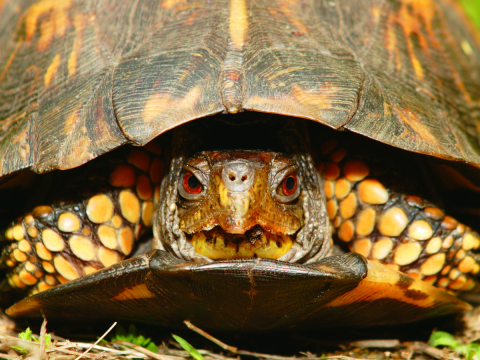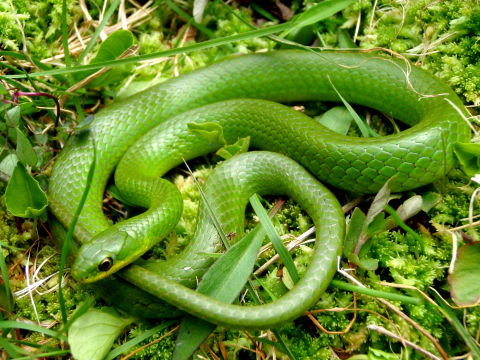Helping Turtles in Trouble
Turtle populations are falling because of water pollution, humans' development of natural areas, roads fragmenting the landscape, illegal collecting for the pet trade, and effects of climate change.
Biologist John Litvaitis explains why one species is in decline, along with threats to Northeastern turtles in general, in "Saving the Wood Turtle" in Northern Woodlands magazine.
Food, Sun, and Shade
Turtles that use young forest and shrubland include the eastern box turtle, wood turtle, and spotted turtle. In general, these and other reptiles thrive when they can find and use various habitats depending on the species' biology and behaviors, the weather, and the season of the year. In spring, after they leave winter dormancy, turtles seek out openings in woods and thickets where they can bask in sunlight and raise their body temperature so they can become active again. During summer's heat, they move to thickets of dense, diverse plants that offer food (insects and fruits), protective cover, and shade.
Other Reptiles
Other reptiles also home in on areas with low, thick plant growth, including lizards and snakes such as racers, rat snakes, and green snakes. They use such areas for basking and hunting prey, ranging from insects up to small mammals. Mosaics of different kinds of habitats, including some openings in forests where young trees, shrubs, and other plants grow densely, are important to most reptiles.
Conservation Status
The International Union for Conservation of Nature, an organization of professional biologists and ecologists, considers the eastern box turtle to be vulnerable and the wood turtle and spotted turtle to be endangered. State wildlife agencies in the Northeast classify these turtles as "Species of Greatest Conservation Need."
Resources
These resources offer advice to land managers and landowners wanting to make habitat for turtles:
- Under Cover: Wildlife of Shrublands and Young Forest details the life history of turtles and other reptiles and suggests approaches to creating and refreshing young forest and shrubland that will help and not harm local populations.
- Conservation Plan for the Eastern Box Turtle in the Northeastern United States is a report to the Northeast Association of Fish and Wildlife Agencies.
- A Guide to Habitat Management for Wood Turtles was developed by the Northeast Wood Turtle Working Group.
- Status Assessment and Conservation Plan for Spotted Turtles in the Eastern United States was prepared for the Virginia Department of Natural Resources, U.S. Fish and Wildlife Service, and Northeast Association of Fish and Wildlife Agencies.



